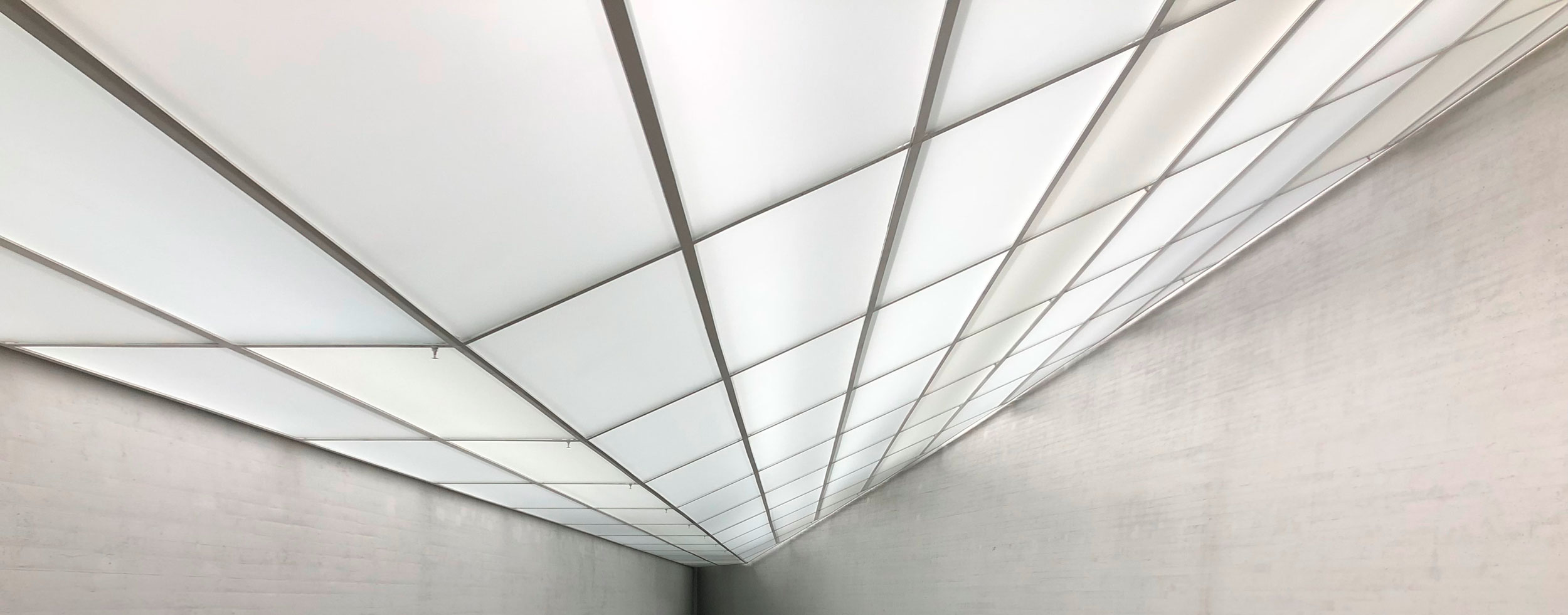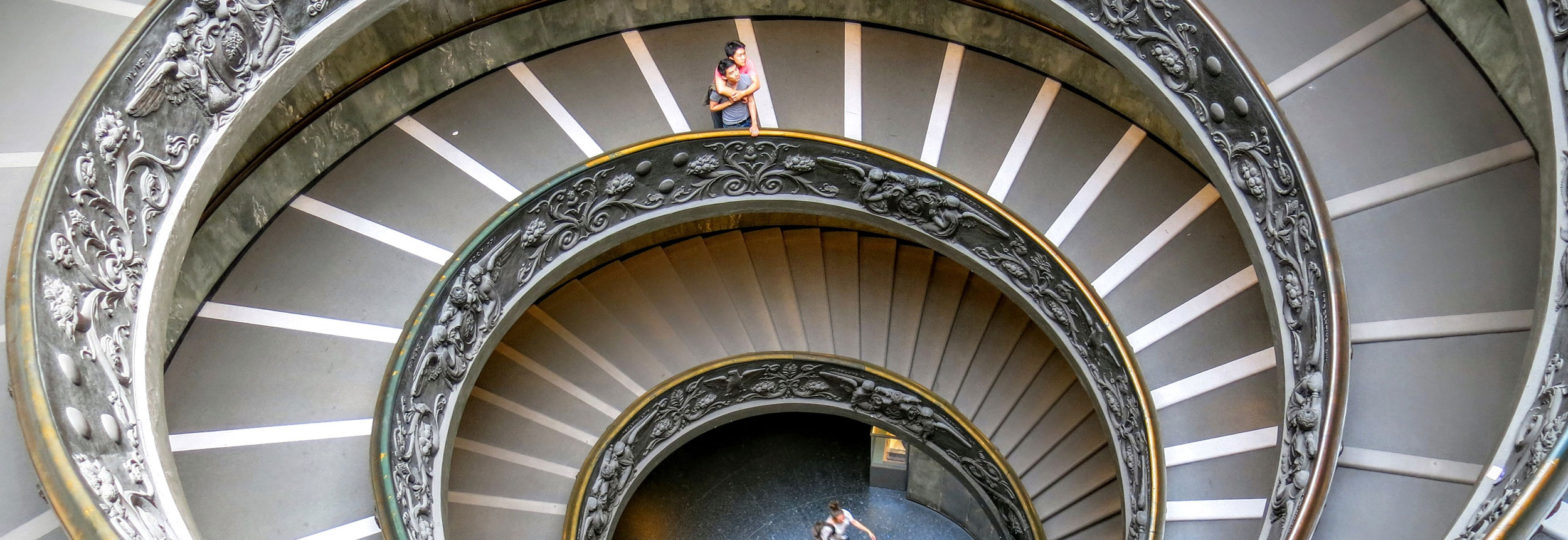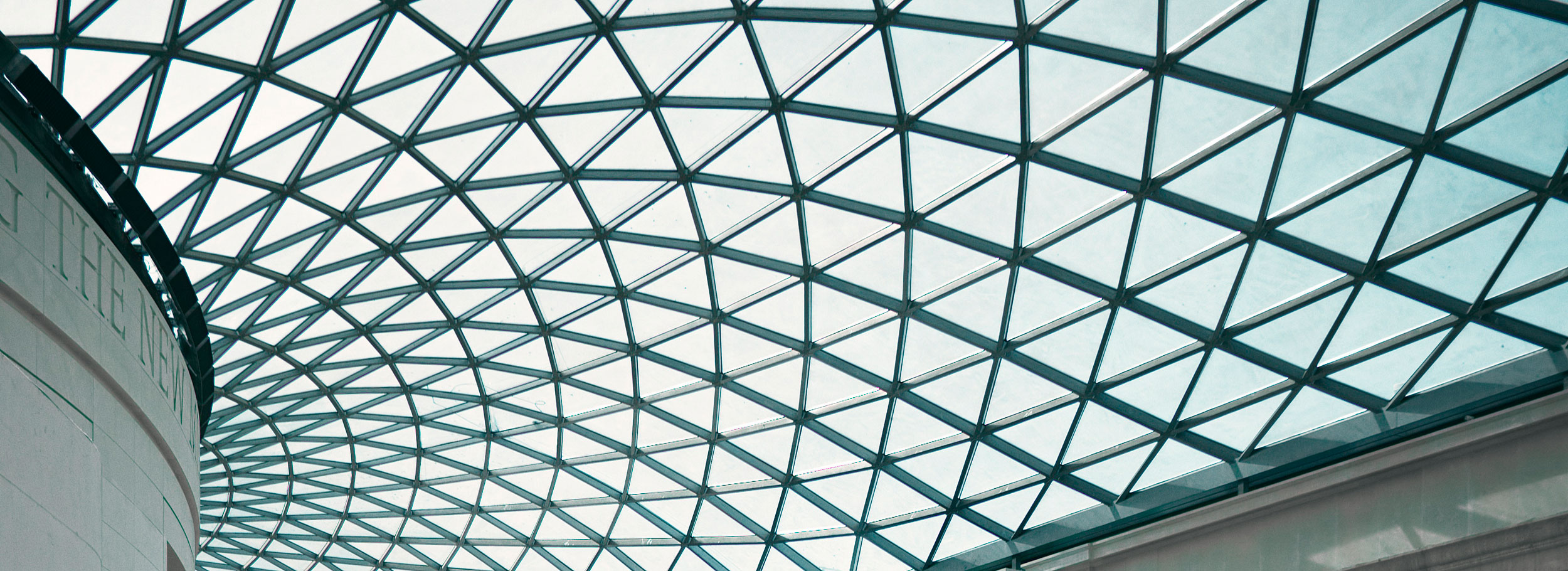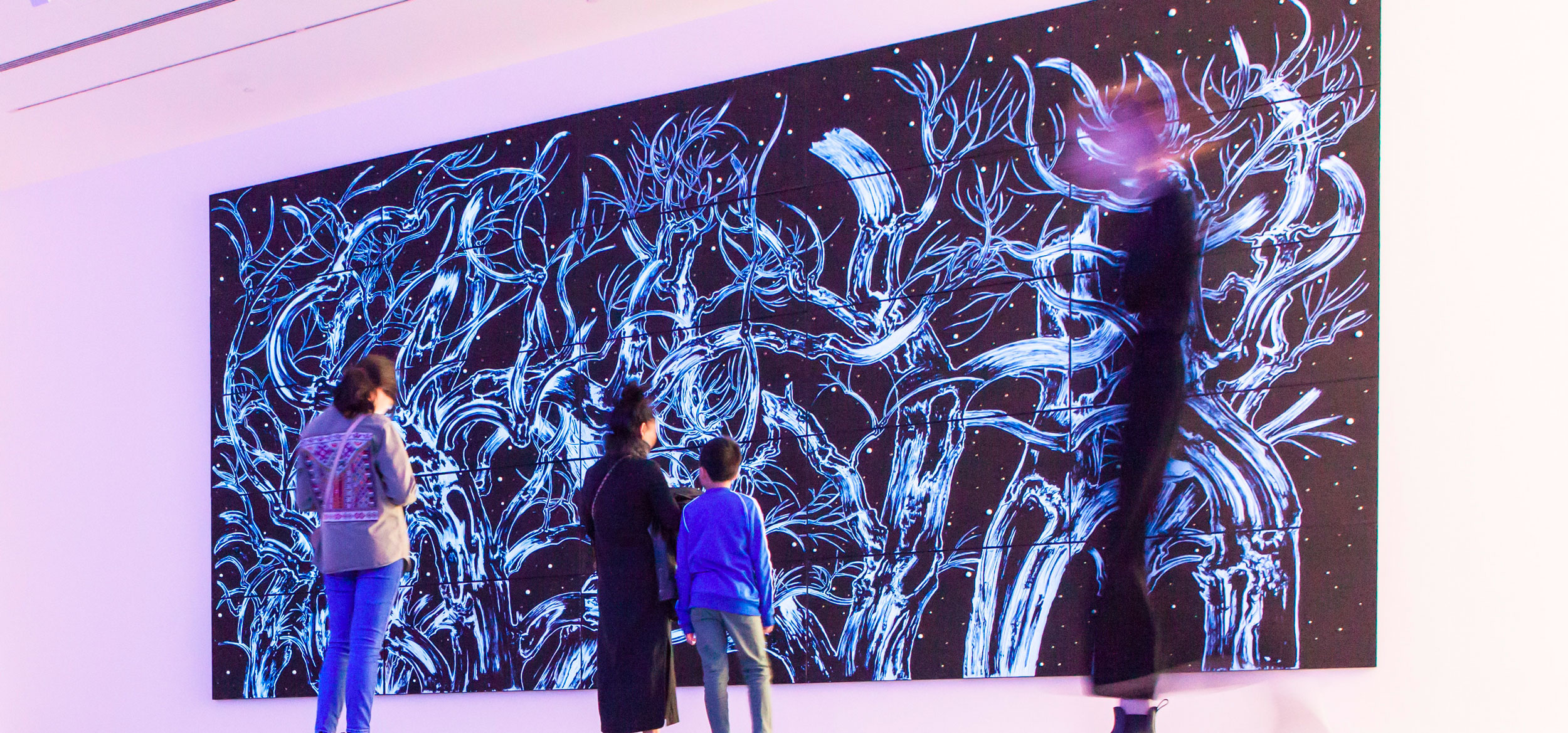POLICY PAPER ON THE DIGITIZATION OF MUSEUM COLLECTIONS
This policy paper aims at clarifying the applicable general copyright law principles for the relevant stakeholders in the museum community worldwide and at formulating policies to facilitate museum activities in the digital environment, following preexisting initiatives and reports that addressed the interface between museums and copyright and/or intellectual property extensively.1 These policies may serve as guidance to stakeholders in other areas dealing with cultural heritage.
These policies are not carved in the stone, but rather represent work-in-progress policies that shall progressively integrate feedback of all stakeholders. For instance, the proposals do not deal with museums as creators of their own copyrighted works extensively (but rather museums as users of third parties copyrighted materials), while it may be worth paying attention to the management of their own IP rights and mediating the potential third party uses.2 This could be analyzed in a version 2.0. Consequently, any stakeholder interested in these policies is invited to comment on this project, and to help us update the whole project into a 2.0 version.
For ease of reference, this policy paper is divided into three general parts. You may also download the full paper here.
Part I: Policy Proposals
In Part I, we propose policies directed especially towards legislators and policymakers, although museums are also concerned in some cases. These policies address different issues raised by the digitization of copyrighted works found in museum collections, e.g. the creation of a digital copy of a work, which will most often be created through photography, scan or a similar mean. This can be done either for internal purposes – such as conservation or archival purposes – or in light of making it available to the public on-site and/or online, or both. The policies also address issues raised by the dissemination of such digitized copyrighted works, e.g. making the digitized copies available to the public. Legislative and/or policy changes or clarifications are suggested in each scenario.
Part II: Museum Code of Conduct for a "Safe Harbor Right Statement"
In Part II, which is directed especially towards museums, we propose a Code of Conduct that museums may follow when pursuing digitization and dissemination activities, in order to comply with the actual state of the law and minimize risks associated with these activities.
Part III: Alternative Dispute Resolution System for Disputed Statements
In Part III, which is also especially directed towards museums but also copyright holders such as artists, we address the relevance of alternative dispute resolution (ADR) means and propose an ADR procedure to help museums and rights holders identify issues and reach satisfactory solutions in cases of disputes pertaining to the copyright status of a work digitized or disseminated (or projected to be) by a museum.

Introductory remarks
Museums and copyrighted assets
a) Museums as users of copyrighted assets
Museums hold a plethora of objects of artistic, cultural, historical or scientific importance whose nature vary greatly. Specimens from the natural world, manmade technological constructions, archaeological and ethnographic materials, antiquities, literary works and artworks are only a few examples of the precious heritage found in museum collections worldwide.
Not all items found in museums are however protected by intellectual property (IP) rights and a fortiori by copyright. Copyright is a form of intellectual property that protects certain types of creative works, such as literary and artistic works, for a definite time period.1 It grants the authors economic rights allowing them to control the reproduction and communication of their works, as well as moral rights allowing them to prevent the distortion of their works and to be named (or not named) in association to their works. Authors are generally free to decide whether they keep full control over these rights, or whether they grant a license to third parties allowing them to also exploit these rights (for instance, if an author expressly allows a museum to make digital copies of its works and/or publish these copies on the museum’s website). However, legal exceptions may apply in some cases, allowing third parties that do not own the copyright in a work to perform acts of reproduction and/or communication – amongst others – even without the author’s permission.
Copyrighted works found in museum collections may include any literary and artistic creation, whether printed, manuscript, three-dimensional or digital, such as books, music, paintings, sculptures, photographs, films and technology-based works (e.g. computer programs, electronic databases and 3D media), protected by national laws in accordance with international treaties.2. On the contrary, ordinary objects lacking originality – such as an old bicycle or regular items that are displayed because they once belonged to a famous person – are not protected by copyright, 3 although they may sometimes be protected by other IP rights. Moreover, after a certain time (which varies from one country to another but is generally at least 50 years after the author’s death)4, copyrighted objects fall in the public domain and lose their copyright protection. This essentially means that only the most “recent” works found in museums collections are protected by copyright.5
Some works found in museum collections can also be “orphan”, meaning that they are protected by copyright but the rights holder is either unknown, cannot be located or cannot be contacted. As it is often difficult, if not impossible, to obtain permission to use the works in such cases, a special set of rules will apply to determine their permitted uses.6
The present Policy Paper concerns only the digitization and dissemination of copyrighted works (including orphan works), since museums are essentially free to digitize and disseminate non-copyrighted or public domain works (subject, of course, to other legal or ethical7 restrictions potentially applicable, which are not discussed in this Policy Paper).
b) Museums as owners of copyrighted assets
Although the present Policy Paper focuses on the challenges faced by museums when digitizing and disseminating third-party copyrighted works (e.g. when museums are users of copyrighted assets), it is important to keep in mind that museums can also be owners of copyrighted assets. Indeed, museums can have IP rights in some the works they own and/or digitize. This will be the case, for instance, for photographs of works taken by museum personnel in jurisdictions where the Lichtbildschutz doctrine applies.8 Museums can also gain some IP rights in third-party works if artists or rights holders choose to assign (transfer) them via contract. Therefore, museums may also find themselves in the opposite situation to what is described in this Policy Paper: they may own the economic rights in works of art and/or digitized copies that third parties, such as museum visitors or internet users, may wish to access, re-use or share for various reasons. Should the changes to copyright law suggested in the proposals below be eventually adopted, they would of course apply to museums as copyright owners as much as to other third parties such as authors.
Yet, even under the actual state of copyright law, museums who take the digital shift should endeavour, as part of their public interest mission, to open up their digitized collections as much as possible and to avoid using copyrights they might own to unduly hinder access, re-use or sharing of digitized materials. No legal reform is necessary in this case, since rights owners are always free to relinquish the protection granted by copyright law (except for some unassignable moral rights). However, museums may endeavour to do so through national guidelines or codes of conduct to give greater weight to this openness and accessibility movement. Upon acquiring new contemporary works of art, they may also encourage artists to immediately license or assign rights in that regard.
Museums and the digital shift
a) The changing environment of museums
Traditionally, museums preserve, interpret and promote the natural and cultural heritage of humanity.9 With respect to cultural heritage, museums have engaged for centuries in its preservation, interpretation and promotion mostly on their own institutional premises and in relation to the tangible artefacts contained in their collection. While these functions still constitute the core of a museum’s mission, digital technology has had a profound impact on all levels of a museum’s conventional activities, which may ultimately require an adaptation of its institutional role.
Major developments brought about by digital technology manifest themselves in at least four ways:
- 1) museum collections contain more diversified works than ever before, ranging from new forms of works, to digitized analogue works and digital born multimedia works;
- 2) museums disseminate the works to the public in many different ways and for different purposes, including through social media, on their premises or at a distance, for scientific, educational and entertainment purposes;
- 3) mirrored by the change in the museum offer, visitors are adapting their behaviour towards the works presented to them, by taking a more “hands-on” and interactive approach to their experience with cultural heritage; and
- 4) there is strong demand by the economy, especially technology SMEs and large telecommunication companies, for more digital content to be made available online by, amongst others, large museums, in order for them to build new and innovative products and services around their content.10 Increasing demand from users to be able to “visit” museums online and, for many institutions, a lack of physical space to display all objects in their possession, make the use of technology and digitization attractive for museums.
In many countries, however, these far-reaching developments occur in the context of persistent financing difficulties. Seeing their public budgetary envelop constantly decrease, museum administrations must innovate in order to remain relevant to a demanding public and, if possible, to generate additional income.
As we shall see below, these changes put the copyright regime under serious strain.
b) The changing nature of the collection
A variety of new forms of art make their way into museum collections, including interactive, live performances (and the video recordings thereof), as well as digital born multimedia works. Museums typically negotiate license agreements with the artist or rights holder upon acquiring these new forms of artworks. In the absence of such a license, however, because of the non-physical nature of these new forms of art, it can become quite challenging for museums to fulfil their core functions with respect to these works, i.e. indexing, cataloguing, preserving, and communicating to the public, as it may be unclear whether the museums have the necessary copyright permission to do so.
The advent of digital technology technically enables museums to digitize the analogue works contained in their collection. Digitization is done for various reasons, including preservation and communication (i.e. the wish to broaden public access to those works). However, in most jurisdictions the copyright legislation does not legally allow wide scale digitization of copyrighted works without the prior authorisation of the rights holder. Obtaining permission becomes particularly problematic in relation to orphan works. Chances are that the older the work gets, the more difficult it is to identify or trace the rights holder.
Moreover, contrary to the vast majority of books, sound recordings or audio-visual works held by libraries, copyright as an economic driver seems limited for visual artists,11 since artworks and other pieces exhibited in museums are often unique and ordinarily not meant for multiple commercial copies. Visual artists may therefore be less inclined to have assigned their rights to a collective rights management organisation (“CMO”), which would make obtaining permission easier.
With digitization also comes an opportunity and a corollary need on the part of museums to develop precise metadata and indexation that will ensure traceability and usability of works. Unfortunately, it is not uncommon to see that even for indexation purposes, some copyright legislations create an obstacle to making the necessary reproductions without prior permission of the rights holder.12
c) The new ways of disseminating to the public
Digital technology has brought changes not only in terms of creating new works and preserving museum collections, but also in terms of disseminating works online to the public. Following the motto that “if you’re not online, you don’t exist”, many museums develop communication strategies aimed at reaching a broader public. Many museums (wish to) set up a digital inventory with internal databases and management of rights when mounting exhibitions. Several museums take advantage of digitization, websites, social media and apps for smartphones and tablets for reaching a greater public with the exhibits of the past, present and future. Depending on the circumstances, the use of social media can form an integral part of a museum’s core function of making the works in the collection available to the public, but it can also be aimed at promoting the museum’s activities and generating additional income.
In practice, online activities take different forms. The Tate Gallery offers a very good example of an institution with an all-encompassing media strategy: exhibitions and collections at Tate are promoted via multiple social media channels, like the World Wide Web, Twitter, Facebook, Youtube, Google+, Instagram, Pinterest and Tumblr.13 The Museum of Modern Art in New York has adopted a similar attitude towards social media,14 knowing that such an approach drastically increases the potential geographical accessibility of its collection, as it attracts virtual and physical visitors to the museum. The same goal lies behind the Dutch initiative of “MuseumTV”, which is a collaboration between Foundation Our Museum and participating Dutch museums. The mission of Foundation Our Museum is to introduce art and culture to the biggest audience possible and highlight the rich and diverse bandwidth of Dutch museums and cultural heritage. It does so by creating short video documentaries promoting the ongoing and upcoming exhibitions.15
However, most museums do not feel as comfortable in putting parts of their exhibitions online; copyright law and the obligation to obtain the rights owners’ permission for such acts creates a serious obstacle to these new forms of dissemination of artistic works – as far as works protected by copyright are concerned.16 In Europe, for instance a 2015 survey showed that European museums have only about 24 % of their digitally reproduced and born digital heritage collections available on line for general use. 17
Moreover, while a study18 showed that digitization is a priority for the vast majority of collections institutions (86%), there are – apart from the copyright obstacles – two important barriers for their goals. Up to date, we see “that most still have a significant backlog to address, and based on their current rate of digitization most are more likely to meet their goals in decades rather than years.” Only 26% of the institutions participating in the study “could confirm they will have met their goal within the next ten years, and 16% can’t even see the completion of their digitization in their own lifetimes, predicting in excess of 50 years.” Also, the study found that “with technology and consumer expectations rapidly changing, the goal posts for digitization are constantly shifting. What constitutes good data and high quality imagery one year can easily fall below standards as new technology, higher-quality photographic equipment and 3D-imaging technology becomes available.”
d) The new forms of interaction from the public
The digital environment likewise has changed the behaviour of museum visitors in a fundamental way. Users now expect to be able to actively participate and interact with art on the premises of the museum and online. Participatory behaviour (e.g. selfies with objects, tweets) should be encouraged as much as possible within the limits of the law, not discouraged. Moreover, technology opens new ways for museums to play an important role in the area of research/educational development.
The digital environment enables, via metadata and open data, scientists, scholars and students to conduct research in museum collections. It also questions the museums’ and their curators’ classic role as sole interpreter of the museum objects and, consequently, encourages museums to rethink their policies (e.g. acquisition of objects and provenance research).19 As a consequence, in order to remain up-to-date and maintain a sustainable user-base, museums must redefine their role between their functions as cultural preserver and promoter; offer their services on a global basis; and therefore interact with their users to a greater extent. Allowing members of the public to interact with artworks may have consequences for both the public and museums in terms of copyright, for instance if derivative works are created and communicated to the public, which would require the original rights holder’s permission. Moreover, in many jurisdictions’ current state of copyright law, it is unclear whether mining a museum’s database for scientific, or other, reason infringes copyright.20
In sum, multiple copyright questions and issues arise when a museum is contemplating digitization for both internal purposes (archival, database) and for its eventual dissemination to the public. Indeed, a museum’s digitization process entails acts of reproduction and communication (making available online or on-site), which are both exclusively reserved to the owner of copyright in the originating artwork unless a legal exception applies. In other words, although a museum may own the physical copy of a work, it does not necessarily have the right to copy or display it digitally, unless a copyright exception applies.21
Against this backdrop, the proposals formulated in this policy paper are aimed at improving the legal situation of museums and at bringing their digitization activities into the 21st Century.
PART I
POLICY PROPOSALS
DIGITIZATION
PROPOSAL 1
Clarify in the law that certain acts of reproduction conducted as part of a museum’s public interest mission do not infringe copyright.
PROPOSAL 2
Statutory exceptions and limitations for the benefit of museums should be given a mandatory character
PROPOSAL 3
Facilitate effective collective licensing of rights, including where possible, through extended collective licensing systems
PROPOSAL 4
Minimize database rights to favour and maintain accessibility to digitized materials
PROPOSAL 5
No additional copyright protection granted to digitized materials
PROPOSAL 6
Encourage museums to use digitized contents for machine-learning purposes, but do not grant copyrights to machine-created digital content
DISSEMINATION
PROPOSAL 7
Clarify in the law that certain acts of communication or making available to the public that are conducted as part of a museum’s public interest mission do not infringe copyright
PROPOSAL 8
No liability of museums if they comply with certain due diligence steps and a correct right statement (promote a kind of “safe-harbour right statement“)
PROPOSAL 9
Promote the development of national copyright guidelines or codes of best practices for various uses of works by museums
PROPOSAL 10
Reaffirm the targeting test for online museums to avoid the applicability of unexpected foreign laws
PROPOSAL 11
Develop an “open data” policy framework for museums
PROPOSAL 12
Promote the interoperability of different licensing models
PROPOSAL 13
Obligation to maintain the digitized objects records / platforms updates (and avoiding the obsolescence)

PART II
MUSEUM CODE OF CONDUCT FOR A “SAFE HARBOR RIGHT STATEMENT”
If a museum decides to digitize and disseminate its collection, it is imperative to do a prior thorough due diligence regarding each object’s copyright status to ensure that copyright law is not violated. The due diligence steps provided in the following code of conduct are meant to aid the museums in the necessary steps they need to take. It furthermore gives guidance to ensure that museums’ various activities in caring for their collection are compatible with copyright law. As stated in Proposal 8, it should allow museums following it to benefit from a safe harbor protecting against abusive litigation.
Nota: This code of conduct applies to museums as users of copyrighted assets. As mentioned in the introduction, museums may also be copyright owners. Different rules will apply to artworks over which museums hold copyright or other intellectual property rights.
1. Identify whether the work in question is a protected work
- Identify whether work in question is a protected work.1
- Identify whether the work in question is still protected. Generally, the term of protection is at least the life of the author plus fifty years after his death2. Many countries have defined longer terms, for example a duration of 70 years after the author’s death in the EU and the US or even 100 years in Mexico. Shorter terms for specific groups of works such as photography or cinematographic works may apply.
2. Identify the purpose of digitization
Prior to asking for the author’s approval for the intended use, make sure that such approval is legally necessary to begin with. Many jurisdictions allow museums to benefit from exceptions, which enable them to use the work without the author’s assent and/or without remuneration. Digitization may for example be allowed to reproduce works in exhibition catalogues, for preservation purposes or for various fair uses including providing an online, searchable database in a low/medium resolution format (in the USA). If an exception applies, a museum may proceed with the intended use without approval and/or payment. If no exception applies, the rights holder must be asked for authorization and may have to be remunerated.
3. Identify the rights holder
In general, copyrights pertaining to a specific object do not pass with the ownership of an original work, meaning that the owner of an object (museum, collector etc.) does not necessarily own the reproduction rights. However, such rights can be transferred by way of a contract. Therefore, there are several possible scenarios:
- In many cases, the original author of a protected work still owns and administers the reproduction rights. The author must be approached directly for his or her approval.
- The author may have passed away. The copyright will have been passed on to a legal successor (one or more individual(s) or a legal entity), who or which must be approached for approval.
- He or she or any legal successors may have assigned the copyrights to a collective rights management organization (CMO)3. If this is the case, the CMO has to be contacted for an authorization to use the work. Some CMOs provide for databases that allow an easy research4 of authors represented by them. If an author can be found in a specific CMO’s data base, chances are that he or she is also represented by other countries’ CMOs, since many CMOs have entered into multilateral contracts to reciprocally represent their “sister” CMOs.
- In rare cases, the author may have explicitly transferred copyrights to the owner of the object, for instance, if the object was donated or bequeathed to a museum. Refer to the contract for specifics.
4. Do not use if you do not know for sure
If the (current) rights holder cannot be identified or approached, the work is orphaned and may, in most jurisdictions, not be used. For a diligent search regarding orphan works in one of twenty jurisdictions of the European Union, Diligent Search5 offers a tool.
It is not advisable to use an orphaned work and simultaneously ask any respective author to come forward, since this may be construed as intentional breach of copyright.
5. Add all available copyright information
Add all available copyright information to the object’s museum database. Most importantly, specify « in & no » copyright and add data when « in » copyright will expire.
6. Always make sure to properly attribute credit
Always make sure to properly attribute credit with the author’s and the work’s name whenever it is used or exhibited.
7. Other copyrights and other IP rights (such as trade marks) may be also be affected
Museums, in caring for their objects, may infringe on copyrights in other respects than reproductive rights only. Conserving, restoring, relocating, reassembling, altering their appearance, redimensioning and other actions regarding an object as well as any manipulation of its reproductions such as changing of colors, clipping or enlarging of sections etc., may violate the author’s moral rights as well. Therefore, when acquiring a protected work, especially a piece of contemporary art, it is advisable to:
- Identify the copyright status of the work and to acquire, if possible, the economic rights6 pertaining to the object.
- Collect as much information as possible about the object, i.e. year of creation, materials used and their sources of supply, individuals involved in its creation (including studio assistants etc.), context, meanings intended by the artist, usage meant by the artist (conceptual art, performance art), interchangeability of components, storage, transport, exhibition conditions.
- Make sure: Was the work actually sold by the author? Was the work already published (intentionally made accessible to the public by the author)? If not, is the museum allowed to do so? Is exhibiting or any specific use of the work contractually excluded?
- Closely coordinate restoration interventions, conservation measures or specific exhibition projects with the rights holder.

PART III
ALTERNATIVE DISPUTE RESOLUTION SYSTEM
Context
The uncertainties concerning the legality of museums’ digitization and dissemination projects discussed in this paper keep museums under a looming threat of litigation and have a deterrent effect on their activities. Except for clear cases, museums – especially those without in-house legal counsel – sometimes choose to avoid risks by avoiding digitization and dissemination of their copyrighted collections.1
Museums need to be encouraged to undertake digitization operations. A dedicated alternative dispute resolution (ADR) system could incentivize them to go forward, knowing that disputes arising in this context could in many cases be solved in a cheap and quick manner.2
As a first step, a specific, quick and free mediation/consultation platform should be created to help museums and rights holders identify the contentious issues and negotiate solutions. Under this system, the parties would first fill a standardized questionnaire concerning all aspects of the digitization and dissemination process to help them identify on which aspects they agree or disagree. Then, they could either negotiate freely on those aspects or request the help of a mediator or conciliator3 if the negotiation proves too difficult. A dedicated platform could also be set up for parties to submit their dispute(s) not settled through mediation before an independent third party who may be empowered to render a binding decision (e.g. arbitrator).4
Such a system has multiple advantages, such as:
- Allowing the parties to reach mutually agreeable solutions that may go beyond the applicable law;
- Giving museums a “checklist” of all the important IP-related considerations pertaining to mass digitization and dissemination operations prior to undertaking them;
- Helping museums and rights holders to negotiate and draft complete licensing agreements in that regard, even without legal counsel, thereby minimizing dispute risks in the future;
Disputes concerning digitized orphan works raise a different set of issues, namely regarding the thoroughness of the museum’s prior diligent search. However, nothing would prevent the parties, once identified, to attempt to negotiate an agreement using the same ADR procedure instead of resorting to litigation.
Proposed ADR Questionnaire
When a dispute pertaining to the copyright status of a work digitized (or projected to be digitized) by a museum arises, the following questionnaire can be filled by the museum, in order for the rights holder to have a complete portrait of the situation. The rights holder may then mention whether he or she agrees or disagrees for each item on the list and comment if necessary. This will allow the parties to see where they stand in a standardized way and circumscribe the issues remaining to be negotiated between the parties directly or before a mediator.
Please click here to access the questionnaire.

Get PDF Documents
Participants
Project Led by
Yaniv BENHAMOU, Art-Law Centre, Digital Law Center, University of Geneva
Justine FERLAND, Art-Law Centre, University of Geneva
Marc-André RENOLD, Art-Law Centre, University of Geneva
Authors
Anne Laure BANDLE, Art Law Foundation
Yaniv BENHAMOU, Art-Law Centre, University of Geneva
Sarah BURKHALTER, Swiss Institute for Art Research (SIK-ISEA)
Justine FERLAND, Art-Law Centre, University of Geneva
Lucie GUIBAULT, Schulich School of Law, Dalhousie University
Mathilde HEATON, Phillips
Elisabeth LOGEAIS, UGGC Avocats
Marc-André RENOLD, Art-Law Centre, University of Geneva
Sandra SYKORA, Independent Legal Counsel and Art Historian
Vanessa VUILLE, Art-Law Centre, University of Geneva
Peer reviewers
Katharina GARBERS-VON BOEHM, Büsing Müffelmann & Theye
Lauryn GUTTENPLAN, Smithsonian Institution
Bernard HORROCKS, Tate Gallery
Florent THOUVENIN, University of Zürich
Other credits
Photos: by Jonathan Singer, Roman Fox, Tony Yakovlenko, Sergei Akulich and Holger Link on Unsplash
Design & Developpement: Stamina
Contact
For any question or comment about this policy paper, please email us at contact@digitizationpolicies.com

